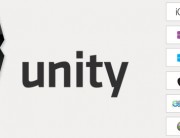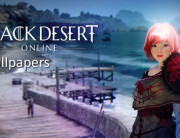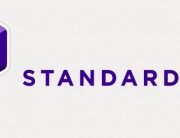Unity3D Tutorials – Multiplayer Introduction
In this article I discuss how to create a simple multiplayer game using a Windows Home Network and 2 PC.
First we need some basic concept about Network and Networking.
Network Computing – Basic Concepts
A Network of PC
To create a network we need 2 or more PC connected with a Router using a LAN cable.
The simplest network is:
PC1 <-> Router <-> PC2
The router is a networking device that forwards data packets between computer networks.
Network Software Setup
If you use Windows7 is very simple setup a Home Network, go to Start button> ‘Control Panel’ and typing homegroup in the search box, and then clicking HomeGroup. After that Windows7 assigns a dynamic IP adress to every PC connected on the network.
An IP adress is a adress that uniquely identifies that individual host maschine inside the network.
An IP adress can be:
– Dynamic, the router assigns automatically a different IP number to every PC connected
– Static, you can manually assign the IP number to your PC
The final resul will be:
PC1(IP 192.168.1.10) <-> Router <-> PC2(IP 192.168.1.11)
IP Private – IP Public & NAT
The most common form of network translation involves a large private network using addresses in a private range (10.0.0.0 to 10.255.255.255, 172.16.0.0 to 172.31.255.255, or 192.168.0 0 to 192.168.255.255). The private addressing scheme works well for computers that only have to access resources inside the network, like workstations needing access to file servers and printers. Routers inside the private network can route traffic between private addresses with no trouble.
However, to access resources outside the network, like the Internet, these computers have to have a public address in order for responses to their requests to return to them. This is where NAT (Network Address Translation) comes into play.
A workstation inside a network makes a request to a computer on the Internet. Routers within the network recognize that the request is not for a resource inside the network, so they send the request to the firewall. The firewall sees the request from the computer with the internal IP. It then makes the same request to the Internet using its own public address, and returns the response from the Internet resource to the computer inside the private network. From the perspective of the resource on the Internet, it is sending information to the address of the firewall. From the perspective of the workstation, it appears that communication is directly with the site on the Internet. When NAT is used in this way, all users inside the private network access the Internet have the same public IP address when they use the Internet. That means only one public addresses is needed for hundreds or even thousands of users.
The scheme is:
PC1(IP Private) | <->
PC2(IP Private) | <->
PC2(IP Private) | <-> Router <-> Firewall (NAT) assign one IP Public <-> Internet
PC2(IP Private) | <->
PC2(IP Private) | <->
Ports
In computer networking, a port is an application-specific or process-specific software construct serving as a communications endpoint in a computer’s host operating system. The purpose of ports is to uniquely identify different applications or processes running on a single computer and thereby enable them to share a single physical connection to a packet-switched network like the Internet. In the context of the Internet Protocol, a port is associated with an IP address of the host, as well as the type of protocol used for communication.
An example for the use of ports is the Internet mail system. A server used for sending and receiving email generally needs two services. The first service is used to transport email to and from other servers. This is accomplished with the Simple Mail Transfer Protocol (SMTP). The SMTP service application usually listens on TCP port 25 for incoming requests. The second service is usually either the Post Office Protocol (POP) or the Internet Message Access Protocol (IMAP) which is used by e-mail client applications on user’s personal computers to fetch (recuperare) email messages from the server. The POP service listens on TCP port number 110.
The well-known ports (also known as system ports) are those from 0 through 1023.
Very popular are:
20 & 21: File Transfer Protocol (FTP)
22: Secure Shell (SSH)
23: Telnet remote login service
25: Simple Mail Transfer Protocol (SMTP)
53: Domain Name System (DNS) service
80: Hypertext Transfer Protocol (HTTP) used in the World Wide Web
110: Post Office Protocol (POP3)
119: Network News Transfer Protocol (NNTP)
143: Internet Message Access Protocol (IMAP)
161: Simple Network Management Protocol (SNMP)
194: Internet Relay Chat (IRC)
443: HTTP Secure (HTTPS)
465: SMTP Secure (SMTPS)
The registered ports are those from 1024 through 49151.
The scheme is:
External application <-> Router IP/Port <-> destination in network IP/Port
Port 25001 is default port for Unity3D game engine networking, UDP protocol.
Game Network approches
There are two common and proven approaches to structuring a network game which are known as Authoritative Server and Non-Authoritative Server.
The authoritative server approach requires the server to perform all world simulation, application of game rules and processing of input from the player clients.
A non-authoritative server does not control the outcome of every user input. The clients themselves process user input and game logic locally, then send the result of any determined actions to the server. The server then synchronizes all actions with the world state. This is easier to implement from a design perspective, as the server really just relays messages between the clients and does no extra processing beyond what the clients do.
Methods of Network Communication
How clients and servers can talk to each other?
There are two relevant methods: Remote Procedure Calls and State Synchronization. It is not uncommon to use both methods at different points in any particular game.
Remote Procedure Calls (RPCs) are used to invoke functions on other computers across the network, although the “network” can also mean the message channel between the client and server when they are both running on the same computer. Clients can send RPCs to the server, and the server can send RPCs to one or more clients. Most commonly, they are used for actions that happen infrequently. For example, if a client flips a switch to open a door, it can send an RPC to the server telling it that the door has been opened. The server can then send another RPC to all clients, invoking their local functions to open that same door. They are used for managing and executing individual events.
State Synchronization is used to share data that is constantly changing. The best example of this would be a player’s position in an action game. The player is always moving, running around, jumping, etc. All the other players on the network, even the ones that are not controlling this player locally, need to know where he is and what he is doing. By constantly relaying data about this player’s position, the game can accurately represent that position to the other players.
Minimizing Network Bandwidth
When working with State Synchronization across multiple clients, you don’t necessarily need to synchronize every single detail in order to make objects appear synchronized. For example, when synchronizing a character avatar you only need to send its position and rotation between clients.
For example, you know that assets like textures and meshes exist on all installations and they usually don’t change, so they will never have to be synchronized.
Bear in mind that you can use a single RPC call with a level name to make all clients load the entire specified level and add their own networked elements automatically. Structuring your game to make each client as self-sufficient as possible will result in reduced bandwidth.
Server Physical Location
The physical location and performance of the server itself can greatly affect the playability of a game running on it. Clients which are located a continent away from the server may experience a great deal of lag.
Unity 3D – State Synchronization
For this Unity3D tutorial I am going to work with a simple Home Network created with Windows7.
1. Create a scene with:
– Main Camera
– Cube, Pos XYZ 0,0.5,0 – Scale xYZ 1,1,1
– Plane, Pos XYZ 0,0,0 – Scale xYZ 10,10,10
– Directional Light
– Empty Object, name it ‘NetworkController’
2. Attach to the Cube, Movement.js
#pragma strict
function Start () {
}
function Update () {
var horiz : float = Input.GetAxis("Horizontal"); // get AD buttons input
var vert : float = Input.GetAxis("Vertical"); // get WS buttons input
transform.Translate(Vector3(horiz,0,vert)); // move along X -> AD and Z -> WS
}
3. Attach to NetworkController, NetworkManagerScript.js
#pragma strict
var btnX:float; // Buttons Setup
var btnY:float;
var btnW:float;
var btnH:float;
function Start () {
btnX = Screen.width * 0.05; // Buttons Setup
btnY = Screen.width * 0.05; // Dimension based on Screen.width
btnW = Screen.width * 0.2;
btnH = Screen.width * 0.2;
}
function startServer() {
// This machine will be the sever
// Initialize the server, number of allowed connection 32, listenport 25001, NOT have a public IP Adress
Network.InitializeServer(32,25001, !Network.HavePublicAddress);
}
// Called when Network.InitializeServer was invoked and has completed.
function OnServerInitialized() {
Debug.Log("Server Initialized");
}
function OnGUI() {
if(GUI.Button(Rect(btnX, btnY,btnW,btnH),"Start Server")){
Debug.Log("Starting Server");
startServer();
}
if(GUI.Button(Rect(btnX, btnY*1.2+btnH,btnW,btnH),"Refresh Hosts")){
Debug.Log("Refreshing");
}
}
function Update () {
}
Play, in the console you will receive the message ‘Sever Initialized’
Good! Now my Unity3D application is the Server.
Next, improve NetworkManagerScript.js
#pragma strict
var gameName: String = "MyFirstNetGame";
private var btnX:float; // Buttons Setup
private var btnY:float;
private var btnW:float;
private var btnH:float;
function Start () {
btnX = Screen.width * 0.05; // Buttons Setup
btnY = Screen.width * 0.05; // Dimension based on Screen.width
btnW = Screen.width * 0.2;
btnH = Screen.width * 0.2;
}
function startServer() {
// This machine will be the Server
// Initialize the server, number of allowed connection 32, listenport 25001, NOT have a public IP Adress
Network.InitializeServer(32,25001, !Network.HavePublicAddress);
// Register this server on the master server
// The Master Server is a meeting place that puts game instances in touch with the player clients who want to connect to them.
// Each individual running game instance provides a Game Type to the Master Server
//(gameTypeName: string, gameName: string, comment: string = "")
MasterServer.RegisterHost(gameName, "My Game Name", "This is a comment");
}
// Called when Network.InitializeServer was invoked and has completed.
function OnServerInitialized() {
Debug.Log("Server Initialized");
}
// Called on clients or servers when reporting events from the MasterServer
function OnMasterServerEvent(mse:MasterServerEvent){
// check if registration is ok
if (mse == MasterServerEvent.RegistrationSucceeded){
Debug.Log("Registrered Server!");
}
}
function OnGUI() {
if(GUI.Button(Rect(btnX, btnY,btnW,btnH),"Start Server")){
Debug.Log("Starting Server");
startServer();
}
if(GUI.Button(Rect(btnX, btnY*1.2+btnH,btnW,btnH),"Refresh Hosts")){
Debug.Log("Refreshing");
}
}
function Update () {
}
Play it, you will get in console “Server Initialized -> Registrered Server!”
For italian people: come funziona?
1. Network.InitializeServer(32,25001, !Network.HavePublicAddress);
Inizializza l’applicazione Server attraverso il network, identifica IP, la porta, il numero massimo di connessioni ammesse.
2. MasterServer.RegisterHost(gameName, “My Game Name”, “This is a comment”);
Il MasterServer è il punto di incontro tra i vari Clients, quindi registriamo presso il MasterServer l’applicazione con un identificativo di tipo, nome e un commento.
Next, improve NetworkManagerScript.js
#pragma strict
var gameName: String = "MyFirstNetGame";
private var refreshing: boolean;
private var hostData: HostData[];
private var btnX:float; // Buttons Setup
private var btnY:float;
private var btnW:float;
private var btnH:float;
function Start () {
btnX = Screen.width * 0.05; // Buttons Setup
btnY = Screen.width * 0.05; // Dimension based on Screen.width
btnW = Screen.width * 0.2;
btnH = Screen.width * 0.2;
}
function startServer() {
// This machine will be the Server
// Initialize the server, number of allowed connection 32, listenport 25001, NOT have a public IP Adress
Network.InitializeServer(32,25001, !Network.HavePublicAddress);
// Register this server on the master server
// The Master Server is a meeting place that puts game instances in touch with the player clients who want to connect to them.
// Each individual running game instance provides a Game Type to the Master Server
//(gameTypeName: string, gameName: string, comment: string = "")
MasterServer.RegisterHost(gameName, "My Game Name", "This is a comment");
} // END startServer
function refreshHostList() {
// check the number of hosts registered in MasterServer
// controlla il numero di applicazioni registrate in MasterServer con 'gameName'
// la registrazione al MasterServer può richiedere dai 3 ai 6 secondi
MasterServer.RequestHostList(gameName);
refreshing = true;
} // END refreshHostList
// Called when Network.InitializeServer was invoked and has completed.
function OnServerInitialized() {
Debug.Log("Server Initialized");
}// END OnServerInitialized
// Called on clients or servers when reporting events from the MasterServer
function OnMasterServerEvent(mse:MasterServerEvent){
// check if registration is ok
if (mse == MasterServerEvent.RegistrationSucceeded){
Debug.Log("Registrated Server!");
}
}
// GUI Graphic User Interface
function OnGUI() {
// if your peer type is NOT client AND is NOT server, cioè se non è già connnesso
// questo if fa scomparire i bottoni una volta cliccato su 'Start Server'
if (!Network.isClient && !Network.isServer){
if(GUI.Button(Rect(btnX, btnY,btnW,btnH),"Start Server")){
Debug.Log("Starting Server");
startServer();
}
if(GUI.Button(Rect(btnX, btnY*1.2+btnH,btnW,btnH),"Refresh Hosts")){
Debug.Log("Refreshing");
refreshHostList();
}
// se esistono dei gameName registrati su MasterServer
if (hostData){
// visualizza un array di bottoni con tutti i gameName registrati come MasterServer
for(var i:int = 0; i<hostData.length; i++){
// se viene premuto il bottone
if (GUI.Button(Rect(btnX*1.5 + btnW, btnY*1.2 + (btnH * i),btnW*3, btnH*0.5), hostData[i].gameName)){
// Connect to the specified host (ip or domain name) and server port
// Example: Network.Connect("127.0.0.1", 25000)
Network.Connect(hostData[i]);
}
}
}
}
}// END OnGUI
function Update () {
// se refreshing è true, cioè ho cliccato sul bottone 'Refresh Hosts'
if (refreshing) {
// se c'è almeno una registrazione
if (MasterServer.PollHostList().Length > 0) {
// disabilita il refreshing per evitare che continui ad eseguirlo ad ogni ciclo Update
refreshing = false;
Debug.Log(MasterServer.PollHostList().Length);
// array con tutte le registrazioni al MasterServer
hostData = MasterServer.PollHostList();
}
}// END Refreshing
}// END Update
For italia people: come funziona?
1. Inseriamo in un array – private var hostData: HostData[] – tutte le connessioni registrare nel MasterServer 1. MAIN TOP MENU> Edit> Project Settings> Player> Inspector> Settings for PC Mac LinuX Standalone> Run in Background: check L’applicazione deve essere attiva in background perchè deve continuare ad inviare dati al MasterServer anche quando non lo stiamo utilizzando. 2. MAIN TOP MENU> File> Buil Settings…> PC Mac Linux Standalone> Build, TestBuild.exe a. Run the standalone build, click ‘Start Server’, the buttons will disapper For italian people: come funziona? 1. Hierarchy> select Cube (our player)> Inspector > ‘Add Component’> Miscellaneous> Network View: – State Syncronization: Reliable Delta Compressed – Observed: Cube(Transform) ‘Network Views’ are the gateway to creating networked multiplayer games in Unity. 1. Save the scene and the project For italian people: come funziona? 1. Primo eseguibile: premendo ‘Start Server’ questa applicazione funzionerà da Server e in più si registrerà come client A this point in time both players can move the same cube… mmm… it sounds strange… Let’s take a look to the new Movement.js For italian people: come funziona? 1. Add to NetworkManagerScript.js the code: 2. DRAG ANG DROP the Cube from Hierarchy to Project, it will become a Prefab 3. Hierarchy> select Cube and press CANC on the keyboard 4. MAIN TOP MENU> GameObject> Create Empty, name it SpawnPoint, position it in the point where the Cube will appear. 5a. DRAG AND DROP Hierarchy> SpawnPoint over NetworkController> NetworkManagerScript> var spawnObject 6. Add to NetworkManagerScript.js the code: For italian people: come funziona? 0. Project> select the Cube> Add Component> Physic> Rigid Body> check ‘Is Kinematic’ 1. MAIN TOP MENU> GameObject> 3D Object> Sphere> Inspector> Collider> check ‘Is Trigger’, move it at Position X=-3 Y=0 Z=0 2. Attach to the Sphere, SphereScript.js 3. Play, ‘Start the Server’, move the Cube to collide with the Sphere, the Sphere will change color to red. 4. Hierarchy> select the Sphere> Inspector> ‘Add Component’> Miscellaneus> Network View: Change SphereScript.js as: For italian peolple: come funziona? Now a final overview: Hierarchy: – Main Camera Project: – Cube (prefab, It is our Player) Particular Components List: – NetworkController (Empty) – Cube (prefab, It is our Player) – Sphere (it is the goal to reach) The final scripts: Movement.js NetworkManagerScript.js SphereScript.js That’s all folks! NOTE: You will notice a small delay between the input and the actual movement, this is because the position is updated after the new data is received. All we can do is predict what is going to happen based on the old data. One method to predict the next position is by taking the velocity into account. A more accurate end position can be calculated by adding the velocity multiplied by the delay. See the lesson 2 about Multiplayer – Latency Compensating Methods at: My official website: http://www.lucedigitale.com References: – http://docs.unity3d.com/Manual/net-HighLevelOverview.html Extra resources: – http://developer.valvesoftware.com/wiki/Source_Multiplayer_Networking
2. Con un ciclo for le visualizzo utilizzando una grafica composta di bottoni – (var i:int = 0; i
Se così non fosse ogni volta che usciamo dal gioco, lasciandolo attivo nella barra di windows, la connessione con il MasterServer andrebbe persa.
Con l’applicazione settata per funzionare in background invece posso lasciare il gioco attivo, utilizzare un’altra applicazione e tornare al gioco senza dover di nuovo effettuare la procedura di registrazione al MasterServer.
b. Play inside Unity3D the Project> click ‘Refresh Hostst’, you will see the registered host, yeah it works!
a. Creo un buil stand alone e l’avvio, questa crea il MasterServer e si registra presso il MasterServer come client
b. Avvio da Unity3D il progetto, cliccando su’Refresh Hosts’ osservo che effettivamente la build standalone funziona ed è reistrata presso il MasterServer.
c. Posso provare a chiedere TestBuild.exe e riavviare il progetto su Unity3D, cliccare su ‘Refresh Hosts’, nessun applicazione risulterà registrata a MasterServerNetwork View Component
The difference between the last state and the current state will be sent, if nothing has changed nothing will be sent.
The Component data that will be sent across the networkNew TestBuild.exe
2. Build and run the standalone exe, press ‘Start Server’, all buttons disappear.
3. Play inside Unity3D the Project> click ‘Refresh Hosts’, the button ‘Tutorial Game Name’ appears, press it to starl this client, all buttons disappear.
4. Jump to standalone exe, move the Cube using the arrow key. In the Unity Game window you will see the cube goes all around!
2. Secondo eseguibile: facendo un refresh degli hosts si visualizza il Server attualmente registrato (il primo eseguibile)
3. Secondo eseguibile: facendo click sul nome del Server si registra il secondo eseguibile come client
Se si tenta di far partire il server dal secondo eseguibile si riceverà la risposta che il server è già stato avviato.The Player is mine!
#pragma strict
function Start () {
}// END Start()
function Update () {
var horiz : float = Input.GetAxis("Horizontal"); // get AD buttons input
var vert : float = Input.GetAxis("Vertical"); // get WS buttons input
// Solo il server, cioè quello che parte per primo potrà spostare il cubo
// Object instanted by me
if (networkView.isMine){
transform.Translate(Vector3(horiz,0,vert)); // move along X -> AD and Z -> WS
}
}// END Update()
1. Il primo eseguibile che viene avviato genera l’oggetto e diventa di sua proprietà – networkView.isMine –
2. Solo se l’oggetto è di mia proprietà puoi muoverlo
3. Il secondo eseguibile può solo assistere al movimento del cubo senza poter inviare dei comandiSpawn Player
...
var playerPrefab: GameObject;
var spawnObject: Transform;
...
function spawnPlayer() {
Network.Instantiate(playerPrefab, spawnObject.position, Quaternion.identity, 0);
}
// Called when Network.InitializeServer was invoked and has completed.
function OnServerInitialized() {
Debug.Log("Server Initialized");
spawnPlayer();
}// END OnServerInitialized
function OnConnectedToServer() {
spawnPlayer();
}
...
5b. DRAG AND DROP Project> Cube over NetworkController> NetworkManagerScript> var playerPrefab
...
if (networkView.isMine){
transform.Translate(Vector3(horiz,0,vert)); // move along X -> AD and Z -> WS
} else {
enabled = false;
}
}// END Update()
...
1. Trasformo il Cubo che rappresenta il nostro player in un Prefab e poi lo cancello dalla scena rimuovendolo da Hierarchy
2. Aggiungo un oggetto vuoto per segnare la posizione di generazione del Cubo
3. Con la modifica effettuata al codice ogni client genera il proprio Cubo, mi devo ricordare di assegnare in Inspector il Prefab che rappresenta il player e l’oggetto Empty che rappresenta la posizione in cui il player sarà generato.
5. In comune resta solo l’ambientazione costituita dal piano e dalla luce
6a. spawnPlayer() viene richiamata all’inizializzazione del server – OnServerInitialized() – per l’eseguibile server
6b. spawnPlayer() viene richiamata all’inizializzazione del client – OnConnectedToServer() – per l’eseguibile client
7. Se l’oggetto non è mio, disabilitalo – enabled = false; –Unity 3D – RPC
NOTE: Without Rigid Body Component collisions will not be detected!
#pragma strict
function Start () {
}
function Update () {
}
function OnTriggerEnter (other : Collider) {
Debug.Log("Collision detected!");
renderer.material.color = Color(1,0,0,1);
}// END OnTriggerEnter
– State Syncronization: Off, it is ideal for RPC
– Observed: None
function OnTriggerEnter () {
Debug.Log("Collision detected!");
var newCol:Vector3 = Vector3(1,0,0);
// Is sends the function SetColor(), to everyone and adds to the buffer
networkView.RPC("SetColor",RPCMode.AllBuffered, newCol);
}// END OnTriggerEnter
// RPC Tag
@RPC
function SetColor(newColor:Vector3) {
renderer.material.color = Color(newColor.x,newColor.y,newColor.z,1);
}// END SetColor()
1. Non abbiamo bisogno di controllare costantemente il colore della sfera con una comunicazione di tipo Inspector> NetworkView> StateSyncronization, che viene disabilitata.
2. Operiamo il cambio di colore solo se c’è la collisione, quindi selezioniamo un metodo RPC
3. – networkView.RPC(“SetColor”,RPCMode.AllBuffered, newCol); – segnala a tutti i client connessi di avviare la funzione – SetColor() – che cambia il colore ad ogni sfera in ogni client connesso.
4. In definitiva posso avviare i 2 eseguibili, ogni giocatore muoverà il suo player (Cube) e il primo che arriva alla sfera gli farà cambiare colore in rosso.Final Overview
– Sphere (it is the goal to reach)
– Plane
– Directional Light
– NetworkController (Empty)
– SpawnPoint (Empty, give the PosXYZ to spawn Cube)
– Scene
– Scripts
— NetworkManagerScript.js to manage Server and Client
— Rigid Body – is kinematic
— Box Collider
— MovementScript,js to move the cube
— NetworkView – State Syncronization Reliable Delta Compressed
— Sphere Collider – is Trigger
— SphereScript.js to cahnge its color
— NetworkView – StateSyncronization None becuase it use RPC communication inside SphereScript.js
#pragma strict
function Start () {
}// END Start()
function Update () {
var horiz : float = Input.GetAxis("Horizontal"); // get AD buttons input
var vert : float = Input.GetAxis("Vertical"); // get WS buttons input
// Solo il server, cioè quello che parte per primo potrà spostare il cubo
// Object instanted by me
if (networkView.isMine){
transform.Translate(Vector3(horiz,0,vert)); // move along X -> AD and Z -> WS
} else {
enabled = false;
}
}// END Update()
#pragma strict
var playerPrefab: GameObject;
var spawnObject: Transform;
var gameName: String = "MyFirstNetGame";
private var refreshing: boolean;
private var hostData: HostData[];
private var btnX:float; // Buttons Setup
private var btnY:float;
private var btnW:float;
private var btnH:float;
function Start () {
btnX = Screen.width * 0.05; // Buttons Setup
btnY = Screen.width * 0.05; // Dimension based on Screen.width
btnW = Screen.width * 0.2;
btnH = Screen.width * 0.2;
}
function startServer() {
// This machine will be the Server
// Initialize the server, number of allowed connection 32, listenport 25001, NOT have a public IP Adress
Network.InitializeServer(32,25001, !Network.HavePublicAddress);
// Register this server on the master server
// The Master Server is a meeting place that puts game instances in touch with the player clients who want to connect to them.
// Each individual running game instance provides a Game Type to the Master Server
//(gameTypeName: string, gameName: string, comment: string = "")
MasterServer.RegisterHost(gameName, "My Game Name", "This is a comment");
} // END startServer
function refreshHostList() {
// check the number of hosts registered in MasterServer
// controlla il numero di applicazioni registrate in MasterServer con 'gameName'
// la registrazione al MasterServer può richiedere dai 3 ai 6 secondi
MasterServer.RequestHostList(gameName);
refreshing = true;
} // END refreshHostList
function spawnPlayer() {
Network.Instantiate(playerPrefab, spawnObject.position, Quaternion.identity, 0);
}
// Called when Network.InitializeServer was invoked and has completed.
function OnServerInitialized() {
Debug.Log("Server Initialized");
spawnPlayer();
}// END OnServerInitialized
function OnConnectedToServer() {
spawnPlayer();
}
// Called on clients or servers when reporting events from the MasterServer
function OnMasterServerEvent(mse:MasterServerEvent){
// check if registration is ok
if (mse == MasterServerEvent.RegistrationSucceeded){
Debug.Log("Registrated Server!");
}
}
// GUI Graphic User Interface
function OnGUI() {
// if your peer type is NOT client AND is NOT server, cioè se non è già connesso
// questo if fa scomparire i bottoni una volta cliccato su 'Start Server'
if (!Network.isClient && !Network.isServer){
if(GUI.Button(Rect(btnX, btnY,btnW,btnH),"Start Server")){
Debug.Log("Starting Server");
startServer();
}
if(GUI.Button(Rect(btnX, btnY*1.2+btnH,btnW,btnH),"Refresh Hosts")){
Debug.Log("Refreshing");
refreshHostList();
}
// se esistono dei gameName registrati su MasterServer
if (hostData){
// visualizza un array di bottoni con tutti i gameName registrati come MasterServer
for(var i:int = 0; i<hostData.length; i++){
// se viene premuto il bottone
if (GUI.Button(Rect(btnX*1.5 + btnW, btnY*1.2 + (btnH * i),btnW*3, btnH*0.5), hostData[i].gameName)){
// Connect to the specified host (ip or domain name) and server port
// Example: Network.Connect("127.0.0.1", 25000)
Network.Connect(hostData[i]);
}
}
}
}
}// END OnGUI
function Update () {
// se refreshing è true, cioè ho cliccato sul bottone 'Refresh Hosts'
if (refreshing) {
// se c'è almeno una registrazione
if (MasterServer.PollHostList().Length > 0) {
// disabilita il refreshing per evitare che continui ad eseguirlo ad ogni ciclo Update
refreshing = false;
Debug.Log(MasterServer.PollHostList().Length);
// array con tutte le registrazioni al MasterServer
hostData = MasterServer.PollHostList();
}
}// END Refreshing
}// END Update
function OnTriggerEnter () {
Debug.Log("Collision detected!");
var newCol:Vector3 = Vector3(1,0,0);
// Is sends the function SetColor(), to everyone and adds to the buffer
networkView.RPC("SetColor",RPCMode.AllBuffered, newCol);
}// END OnTriggerEnter
// RPC Tag
@RPC
function SetColor(newColor:Vector3) {
renderer.material.color = Color(newColor.x,newColor.y,newColor.z,1);
}// END SetColor()
http://www.lucedigitale.com/blog/unity3d-tutorials-multiplayer-latency-compensating-methods/
– http://www.inetdaemon.com/tutorials/internet/ip/whatis_ip_network.shtml
– http://whatismyipaddress.com/nat
– http://vimeo.com/33996023#
– http://www.paladinstudios.com/2013/07/10/how-to-create-an-online-multiplayer-game-with-unity/
– http://developer.valvesoftware.com/wiki/Lag_Compensation
– http://developer.valvesoftware.com/wiki/Working_With_Prediction
– http://www.gamasutra.com/resource_guide/20020916/lambright_01.htm










